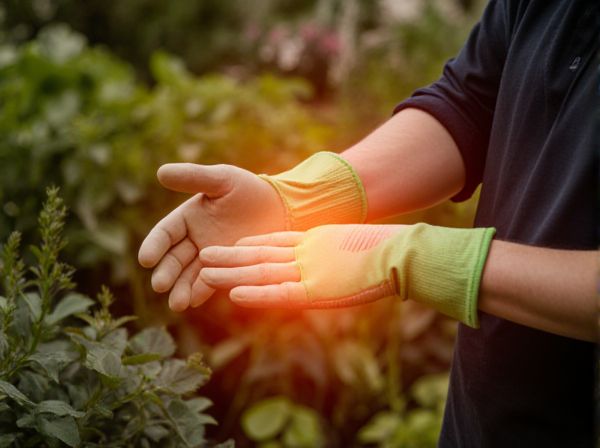
Bottom Heat vs No Heat Illustration
Bottom heat significantly enhances seed germination by providing consistent warmth that activates metabolic processes, especially for heat-loving plants. Seeds sown without heat may experience slower or uneven germination due to cooler soil temperatures impeding enzyme activity. Using bottom heat creates an optimal microenvironment that encourages faster root development and higher germination rates.
Table of Comparison
| Germination Factor | Bottom Heat | No Heat |
|---|---|---|
| Temperature Control | Consistent warmth (20-30degC) | Ambient temperature varies |
| Germination Speed | Faster seed sprouting (reduces time by 30-50%) | Slower germination, depends on environment |
| Seedling Health | Improved root development | Variable root growth |
| Suitable Seed Types | Warm-demanding seeds (tomato, pepper, eggplant) | Cold-hardy seeds (lettuce, kale) |
| Energy Usage | Requires electricity or heat mat | No extra energy needed |
| Cost | Additional equipment cost | Low to no cost |
Understanding Germination: Why Temperature Matters
Optimal germination relies heavily on temperature, with bottom heat providing a consistent warmth that accelerates seed sprouting by activating enzymes and metabolic processes. Without heat, seeds may experience slower or uneven germination rates due to cooler substrate temperatures that inhibit cellular activity. Understanding the impact of soil temperature helps optimize seed starting conditions, ensuring higher germination success and vigorous seedling development.
What is Bottom Heat in Seed Starting?
Bottom heat in seed starting refers to providing consistent warmth to the soil or growing medium from beneath the seed tray, typically using heating mats or pads. This technique creates an optimal temperature environment, usually between 70degF and 85degF, which accelerates germination by stimulating seed metabolism and enzymatic activity. Seeds that require warmth for germination, such as tomatoes and peppers, benefit significantly from bottom heat, promoting faster and more uniform sprouting.
How No Heat Affects Germination Rates
No heat during germination typically results in slower seed sprouting due to lower soil temperatures that inhibit metabolic processes essential for growth. Seeds requiring warm conditions may experience delayed or uneven germination rates without bottom heat, leading to weaker seedlings. However, some cold-tolerant species can germinate effectively at ambient temperatures, making bottom heat unnecessary for those varieties.
Comparative Germination Times: Bottom Heat vs No Heat
Germination times significantly differ between bottom heat and no heat conditions, with bottom heat accelerating seed sprouting by maintaining optimal soil temperatures around 70-85degF. Seeds sown with bottom heat typically germinate 25-50% faster compared to those kept at ambient room temperatures, which can delay emergence up to several days or weeks depending on species. This controlled heat environment reduces dormancy periods and enhances uniform seedling development, making it essential for heat-loving crops like tomatoes and peppers.
Seed Types That Benefit Most from Bottom Heat
Seeds of thermophilic plants such as tomatoes, peppers, and eggplants benefit most from bottom heat as it accelerates germination by maintaining optimal soil temperatures between 75-85degF (24-29degC). In contrast, seeds from cool-season crops like lettuce and spinach typically germinate effectively at ambient temperatures without additional bottom heat. Providing consistent warmth through bottom heat promotes uniform sprouting and reduces time to germination for heat-loving species.
Energy Efficiency: Is Bottom Heat Worth It?
Bottom heat enhances seed germination rates by maintaining optimal soil temperature, which accelerates metabolic processes and promotes faster root development. While it consumes additional energy compared to no-heat methods, the improved germination speed and higher success rates can justify the electricity cost for temperature-sensitive seeds. Energy-efficient heat mats with thermostats optimize power usage by delivering consistent warmth only when temperatures drop below set thresholds.
Common Methods for Providing Bottom Heat
Common methods for providing bottom heat during seed germination include using heat mats, seedling heat cables, and warming trays, which maintain consistent soil temperatures between 70degF and 85degF to promote faster and more uniform sprouting. Heat mats with adjustable thermostats offer precise temperature control, essential for heat-loving seeds such as tomatoes and peppers, while warming trays combine heat with humidity to optimize the microenvironment. Seedling heat cables are flexible alternatives suitable for small seed starting areas, ensuring seeds receive consistent warmth without overheating or drying out the soil.
Troubleshooting Germination Issues Without Extra Heat
Seed germination without bottom heat frequently faces challenges such as slow sprouting or inconsistent moisture levels. Maintaining a stable environment with adequate humidity and temperature around 65-75degF can promote better germination outcomes. Utilizing covers like plastic domes or trays helps retain moisture, while ensuring even watering prevents seed rot and fungal growth in the absence of added heat.
Safety Tips for Using Heat Mats in Gardening
Using heat mats for bottom heat in germination boosts seed sprouting rates by maintaining optimal soil temperatures between 70degF and 85degF. To ensure safety, always place heat mats on waterproof, insulated surfaces and avoid leaving them unattended for extended periods to prevent overheating or electrical hazards. Regularly check the mats for wear and use a thermostat controller to regulate temperature precisely, reducing risks of seed damage and fire.
Practical Recommendations: When to Use Bottom Heat
Bottom heat is recommended for germinating seeds that require consistently warm soil temperatures, such as peppers, tomatoes, and eggplants, to accelerate and improve germination rates. Seeds that naturally germinate in cooler conditions, like lettuce and spinach, generally do not benefit from added heat and may even suffer from overly high temperatures. Using a seedling heat mat can provide controlled warmth, especially in cooler environments or during early spring planting, ensuring optimal soil conditions for successful germination.
Bottom Heat vs No Heat Infographic

 gardendif.com
gardendif.com